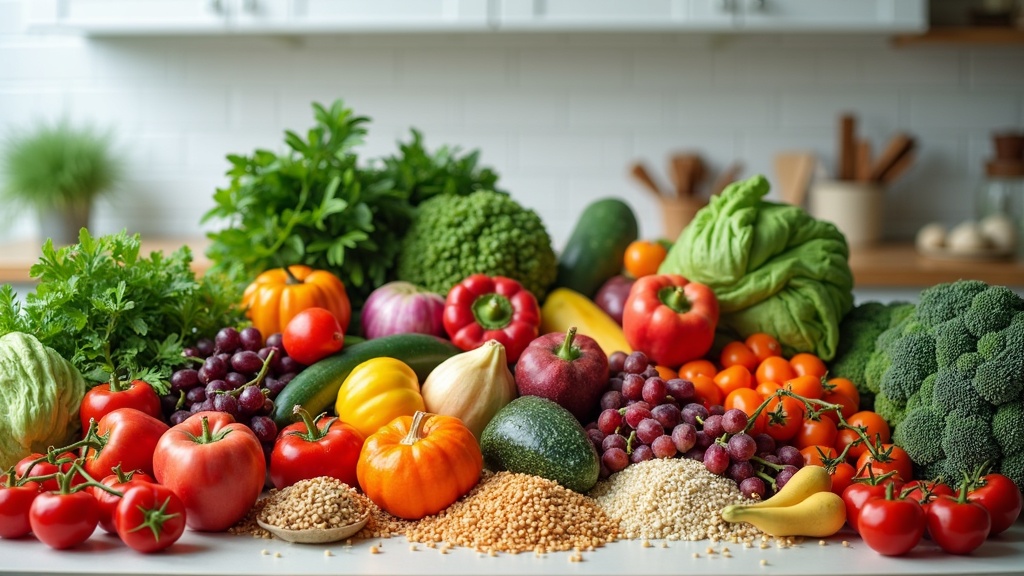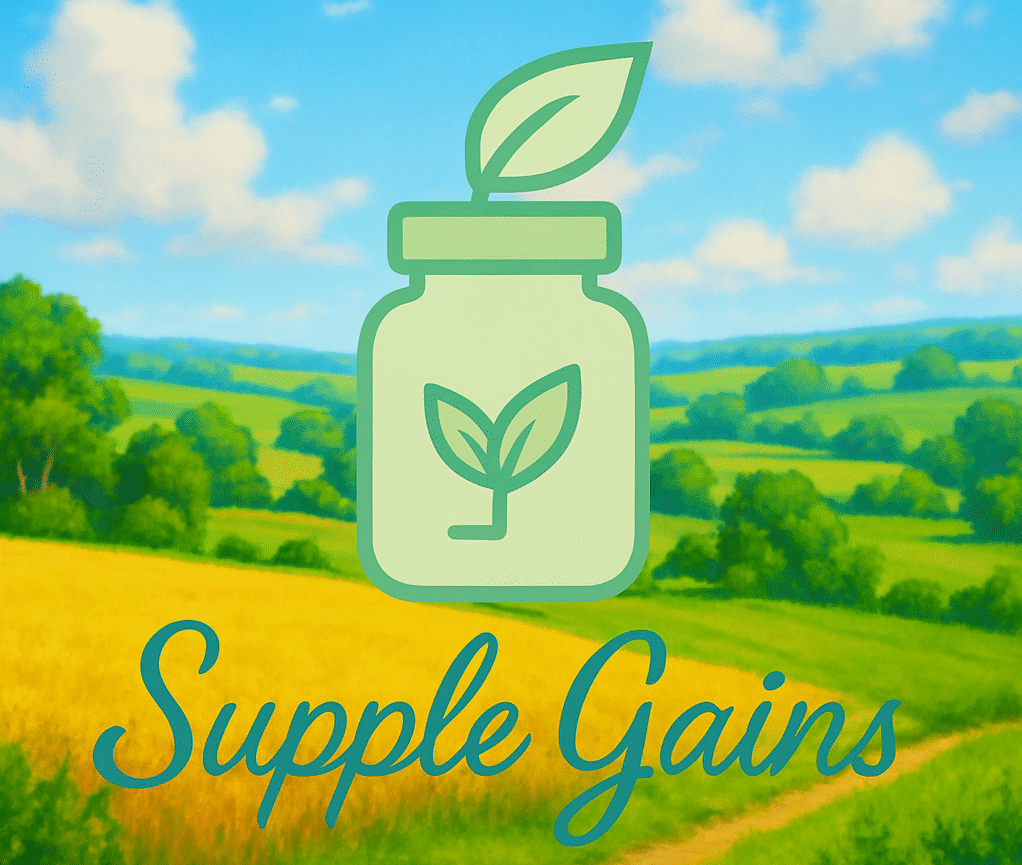Plantbased eating is spreading like wildfire, but keeping up with it during busy weekdays can feel like too much sometimes.
I’ve found that having a solid, go-to grocery shopping to-do list can take a lot of stress out of my week and helps me eat healthier without much fuss.
I’m here to share a practical guide for anyone looking to streamline their plantbased shopping—even when your days are fully booked.

Why A Plantbased Grocery List Makes Weekdays Smoother
Switching to more plantbased meals can make you feel better, help the environment, and lower your food costs.
The key is having a plan so you spend less time figuring out “what’s for dinner?” when you’re tired or rushed after work.
The popularity of plantbased diets means stores have a lot more options now, so knowing what you’re shopping for keeps things fast and focused.
I’ve noticed that taking a few minutes to think about the week ahead saves way more time and money than swinging by the store every day to pick up random things.
With a consistent list, I’m not only more likely to stick to my goals, but I also waste less food and keep my pantry stocked with what I need.
Smart Planning: Plantbased Staples To Always Have On Hand
There are a few items that really help me speed up weeknight meal prep without giving up variety or taste.
These aren’t fancy, just practical building blocks for busy weeks.
Here’s what I keep stocked most weeks:
- Whole Grains: Brown rice, quinoa, whole wheat pasta, and rolled oats. They cook up quickly or can be batchcooked for multiple meals.
- Canned or Dried Beans: Black beans, chickpeas, lentils, and kidney beans are packed with fiber and protein. Canned beans are super handy when you’re short on time.
- Frozen Veggies: Broccoli florets, spinach, corn, edamame, and peas freeze well and can give almost any meal a fast boost.
- Fresh Produce: I pick fastto-use favorites like baby carrots, leafy greens, bell peppers, zucchini, onions, and avocados. Prewashed salad mixes are a weekday lifesaver.
- Nuts and Seeds: Almonds, walnuts, chia seeds, hemp hearts, and pumpkin seeds are easy to toss into breakfast bowls, yogurt, or salads.
- Plantbased Milks: Oat milk or almond milk work for both savory and sweet recipes. Shelfstable cartons are great backups.
- Tofu and Tempeh: These stay fresh for a while in the fridge and can quickly bulk up a stirfry, curry, or sandwich.
- Plantbased Spreads and Sauces: Hummus, pesto, salsa, and peanut butter are good for snacks and quick flavor boosts.
Stocking just a few of these lets me throw together bowls, wraps, soups, and quick sautés all week long without much thought.
Creating Your Weekday Plantbased Grocery Shopping List
I start by sketching out a rough meal plan, even if it’s really loose (“salads for lunch,” “one pasta night,” “burrito bowls,” “quick stirfry”).
Then I list out everything I’ll need, checking my pantry so I don’t end up with doubles.
I stick to basics for my core list and add extras when I want to mix in some variety or try something new.
Here’s a general blueprint:
- Grains & Starches: Rice, oats, potatoes, wholegrain bread or wraps.
- Proteins: Beans, lentils, tofu, tempeh, edamame, nut butters.
- Vegetables: Fresh (prepped if possible) and frozen mixes. I pick a rainbow for best nutrition and flavor.
- Fruit: Apples, bananas, oranges, berries, and whatever is in season. These double as snacks and breakfast toppings.
- Pantry Extras: Canned tomatoes, veggie broth, salsa, tahini, soy sauce, rice vinegar, olive oil, and spices.
- Convenience: Prechopped veggies, bagged salad mixes, shredded carrots, and frozen brown rice save so much time.
If you want to make weeknights even easier, batchcooking (like prepping a big pot of rice, a tray of roasted veggies, or a batch of soup) at the start of the week frees up tons of time later.
Quick Tips For Shopping Plantbased on a Tight Schedule
- Shop The Perimeter: Most plantbased staples live around the edges of the grocery store: produce, refrigerator section, and freezer aisle. Grab pantry and canned goods by making a targeted run through the middle aisles.
- Go Bulk When You Can: Bulk bins (for oats, grains, nuts, and seeds) are not only less expensive but also cut down on packaging.
- Stick With Multiuse Ingredients: I like to buy things that can be used in several meals. Bell peppers can go in a stirfry, salad, or sandwich. Canned chickpeas work for salads, curries, and even roasting as snacks.
- Keep The Shopping List On Your Phone: Using a list app saves time, helps you avoid forgetfulness when you’re rushing, and is easy to edit on the fly.
- Don’t Skip the Frozen Section: Frozen fruit and veg are picked at peak ripeness and save so much time (no chopping, less waste, and often more affordable. Plus they last way longer).
Another timesaving tip: sometimes, local or online grocery delivery services can be a great way to speed up your plantbased shopping when your week is packed.
Overcoming Common Challenges With Plantbased Shopping
- Time Crunch: Prepping veggies or cooking beans from scratch on a weeknight is tough. Prechopped produce, frozen stirfry mixes, or readytogo grains are real timesavers.
- Cost Concerns: Some specialty plantbased products (like altcheeses or meat substitutes) can get pricey. Rely mostly on whole foods—beans, grains, seasonal produce—and sprinkle in the special items now and then if you want a treat.
- Limited Storage: If fridge space is tight, favor shelfstable items like canned beans, grains, and root vegetables. Frozen options are good for stocking up without crowding the fridge.
- Keeping It Interesting: Aiming for one new ingredient or recipe each week keeps things from feeling too routine. Sometimes I’ll grab a new sauce, a funky veggie, or a box of frozen veggie burgers to mix things up. You can also trade favorite recipes with friends for fresh ideas.
BatchCooking And Meal Prepping: Plantbased Style
Most weeks I pick one or two dishes to prep in bigger batches—think a pot of chili, a tray of roasted veggies, or a couple salads that hold up overnight.
This way, building quick lunches or dinners is a nobrainer.
Chopping veggies or cooking a big batch of grains while listening to music on Sunday night gives me a head start and honestly feels pretty relaxing.
Making The Most Of Your Plantbased Groceries
It’s worth learning which produce stays fresh longest (like carrots, cabbage, sweet potatoes, and apples), and using more perishable stuff (like spinach and berries) early in the week.
Freezing anything you won’t use stops waste; I’ll put browning bananas or leftover chopped veggies in the freezer for smoothies, soups, or grain bowls later.
Also, getting a sense of which staples you run through quickest will help you adjust your list for future weeks.
If you ever have leftovers, plantbased meals usually freeze and reheat well.
You can freeze cooked lentils, beans, or veggie stews in single portions for a grab-and-go option on those weeks you’re running behind.
Getting creative with leftovers—like turning extra roasted veggies into a wrap or adding last-night’s grains to a soup—means less waste and more money saved.
Frequently Asked Questions
Question: Does eating plantbased mean I have to buy a bunch of expensive specialty products?
Answer:
Not at all.
Most of my shopping list is made up of basic things you’ll find at any grocery store.
Think beans, grains, veggies, fruit, and a few condiments.
I buy plantbased cheeses or burgers when I want something special, but the staples are totally affordable.
Question: What can I do if I’m short on time and energy?
Answer:
Precut veggies, bagged salads, frozen meals, canned beans, and microwavable grains are all worth the slight extra expense on extrabusy days.
Keeping it simple with bowls or wraps is my goto on nights when I’m wiped out.
Question: How do I keep meals fun when I’m having the same foods a lot?
Answer:
Switching up sauces, trying a new grain, or adding a new veggie can really shake things up.
I like to pick recipes from different cuisines—maybe a curry one week and a Mexicaninspired bowl the next—to keep flavors interesting.
Your Week, Made Easier: The Benefits Of Sticking To Your Plantbased List
Following a simple, personalized grocery list saves time, keeps you eating better, and removes the biggest barrier: “What should I eat tonight?”
Each week, it gets a bit easier, and you start to stumble upon which ingredients you and your family really love.
Whether you’re trying out plantbased eating or just want to add more veggies to your meals, sticking to a steady routine makes life during a busy week lighter, healthier, and tastier.
